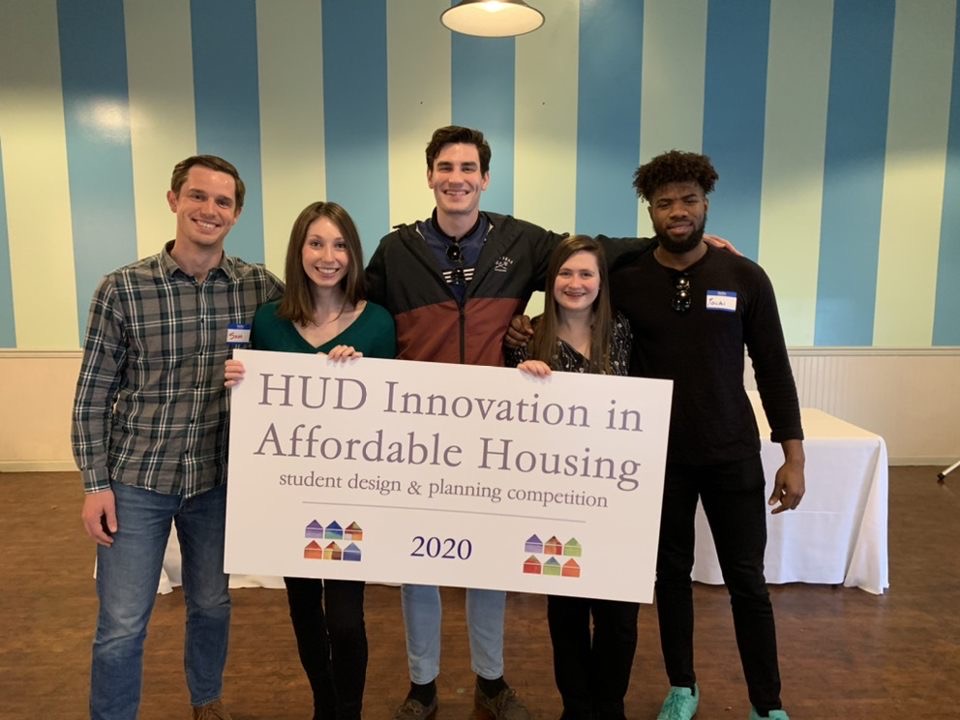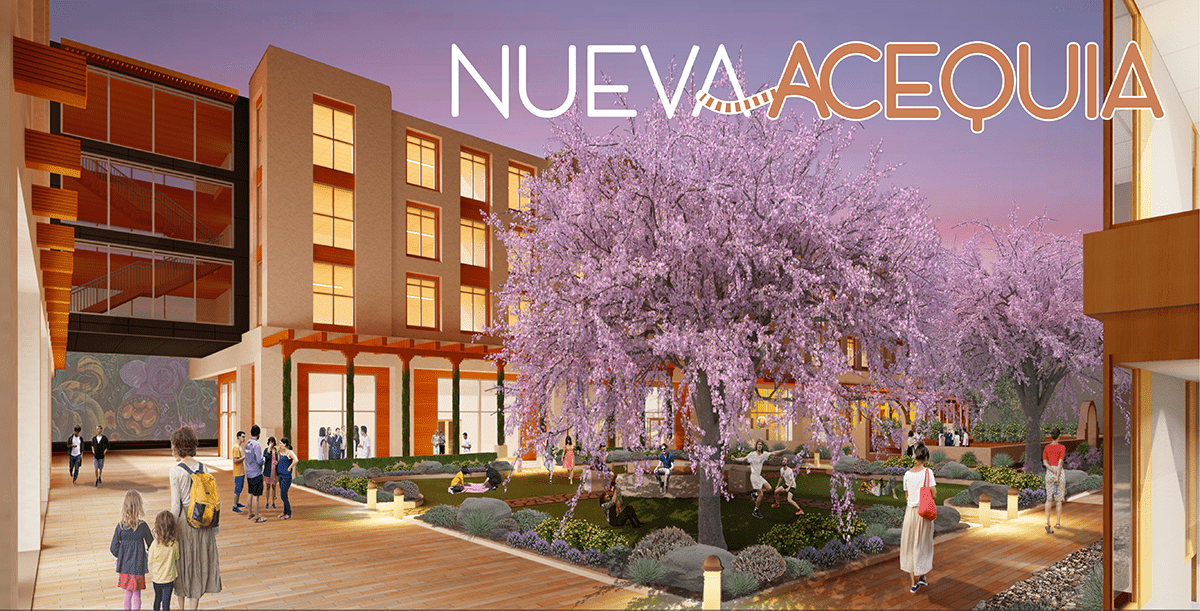Community-centered design, pathway to ownership puts UMD in 2020 winner’s circle
The University of Maryland’s net-positive, affordable housing project with a defined community focus took second place in the seventh annual HUD Innovation in Affordable Housing Student Design and Planning Competition (IAH) 2020. The interdisciplinary team of real estate, planning, historic preservation and architecture graduate students behind the Santa Fe, New Mexico-based project, called Nueva Acequia, initially beat out 32 teams from some of the finest and most prestigious graduate-level programs in the United States to gain a coveted finalist slot. Nearly 150 people tuned in on Thursday as Maryland went virtually head-to-head against Yale University, University of Michigan and University of California-Berkeley via Zoom in a live YouTube broadcast. Team Maryland is: Maggie Curran (Team Leader, M.C.P.), Shayne Piltz (M.ARCH, M.C.P.), Tochi Chimaobi Ohakawa (M.ARCH, MRED), Sam Bohmfalk (M.H.P, MRED) and Andrew Walker (M.ARCH, MRED). Maria Day-Marshall, director of the Real Estate Development Program and ZDS Architecture & Interiors’ Rob McClennan, AIA, are the team’s advisors.

“We are absolutely thrilled for Shayne, Tochi, Maggie, Sam and Andrew,” said Interim Dean Donald Linebaugh. “They delivered an exciting and meaningful product in this competition that truly leverages the many disciplines we offer at the school. This was a well-deserved win that clearly demonstrates the interdisciplinary focus and strength of our school.”
“The great benefit of a competition like this is that you are pulling people from different disciplines together and I think it’s really valuable to learn more about what the other disciplines do,” said team member Sam Bohmfalk. “On some level we all understand what an architect or a developer does, but a competition like this really exposes the details of where they fit and what makes each part so important.”
The IAH competition is built on the philosophy that ideas and innovations from the next generation of professionals are essential to fulfilling the need for affordable, sustainable housing. The IAH challenges interdisciplinary, graduate-level teams to address the social, economic and environmental issues that surround a real-world housing problem in the United States, by creating innovative and original solutions through development, design and finance. This year’s competition asks teams to design a LEED-rated, low-income housing complex in a fast-growing part of Santa Fe, New Mexico, that offers a high-density, vibrant, community-focused scheme in the spirit of Santa Fe’s Southwestern architectural heritage. Affordable housing is a pressing issue for the small southwest city of 88,000 people; city officials estimate that 5,000 affordable units must be added to meet its current demand.
Maryland’s project adeptly addressed the significant need for affordable housing and the city’s desire for high-density development by presenting an ambitious, 200-plus unit plan, one of the highest in the competition. Designed specifically to support multi-age, multi-stage residents, Nueva Acequia centers on fostering opportunity, diversity, health and wellness, sustainability and community. A mix of unit types flank a village green, a focal gathering space for community programming and activities designed to create a sense of place and enhanced security. Live-work spaces are designed to support Santa Fe’s vibrant artist community and offer opportunity for employment and entrepreneurship, while multi-generational support, including mental health, senior transportation services and after-school programs, support residents of all ages.
“[They] were very creative with their sources,” said Rob Hazelton, CEO of Dominion Due Diligence Group and lead juror. “The live-work space and senior support services are fantastic and it’s always nice to see a fitness center in an affordable housing project.”
“Congratulations to all of the competitors,” said HUD Deputy Secretary Brian Montgomery. “The team’s focus and hard work in their final proposals was evident. The jury had a very difficult decision to make.”
While the financing, landscape interventions and community amenities won accolades from the judges, it was the mechanisms to grow residents’ financial security baked into the project that really caught the judges’ attention. The project utilizes Rental Assistance Demonstration (RAD) tenant-based housing vouchers and structured the dwellings as lease purchase units, building in a pathway to home ownership for renters.
“After refining our proposal, we recognized that as we increased construction costs the townhomes weren’t doing as much for us from the equity side,” said Bohmfalk. “We chose to transition them from a market rate piece that was helping to fund the site to an innovative program that could help low-income residents who otherwise would not have access to homeownership.”
The team also put significant effort into addressing energy use, developing a host of interventions that transform the development project into a net-positive housing solution. The architecture takes a page from New Mexico’s traditional Taos Pueblo, but with a more hyper-efficient building envelope to respond to the dramatic climate swings of the region. A self-sustaining ecosystem, site specific building strategies and rooftop photovoltaic panels could conceivably earn the project a LEED-platinum rating.
"We could not be prouder of this team’s performance,” said Day-Marshall. “Not only did they present a creative, beautiful and ambitious solution today, they managed the virtual situation beautifully. It is not easy presenting a cohesive project when you are in five different locations and cannot see the jury. They absolutely brought their A game."
The University of Maryland has an established track record in the IAH Competition. UMD teams were finalists in 2016, 2018 and 2019, placing second in 2016 and winning the competition in 2018 and 2019. The 2020 team had the benefit of working with McClennan and Day-Marshall, who have been a constant presence over the past few years, as well as tapping into past competitors—now alumni—to help refine their idea.
“I think that we benefit from having sustained success in this competition,” said Bohmfalk. “In a way, our designs build off what our predecessors have done. We’ve been able to see what they did each year, see where they found success and take it one step forward.”

